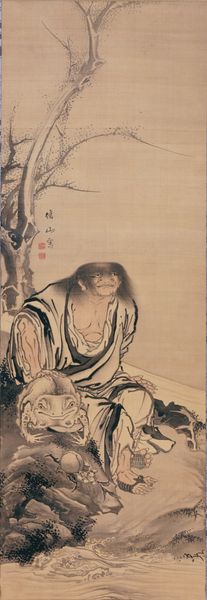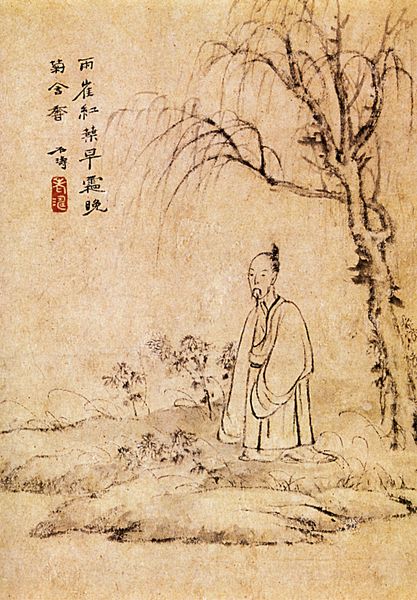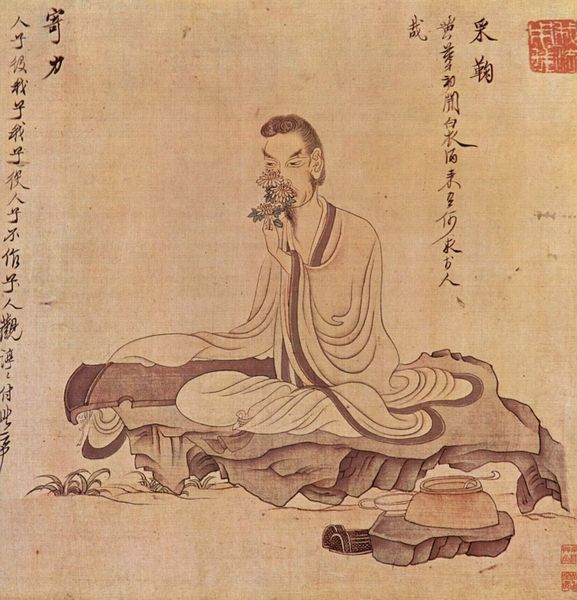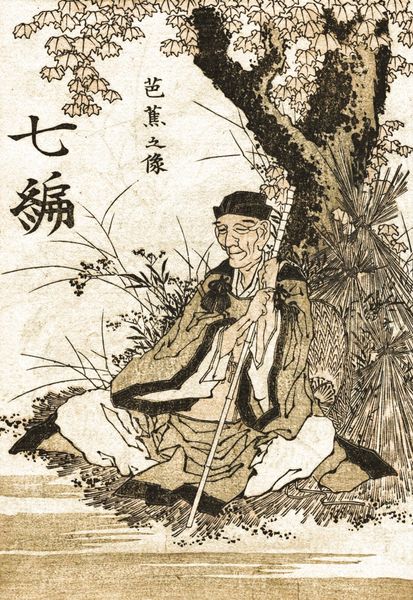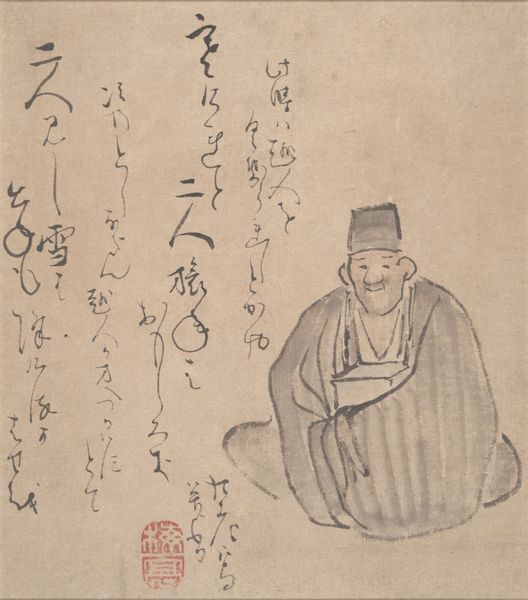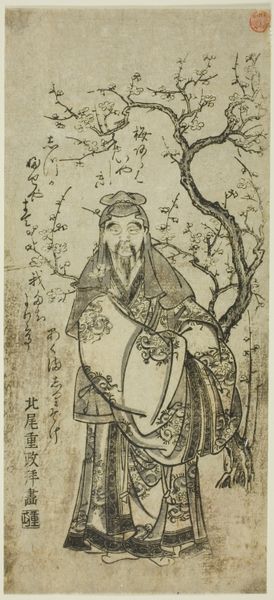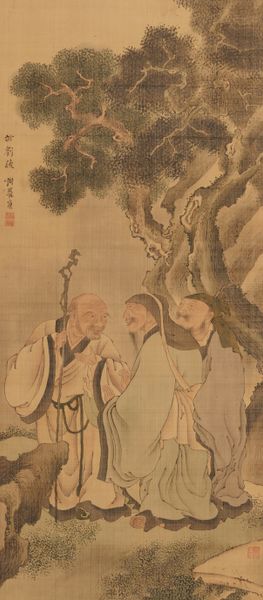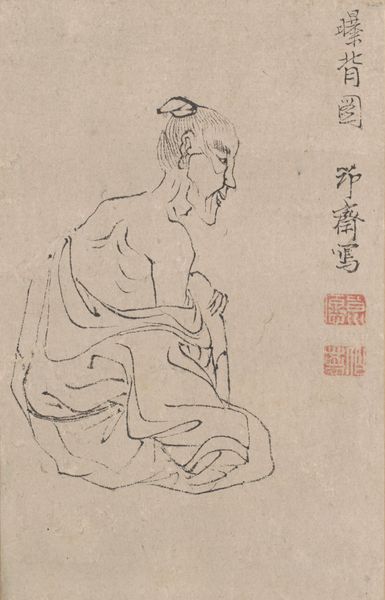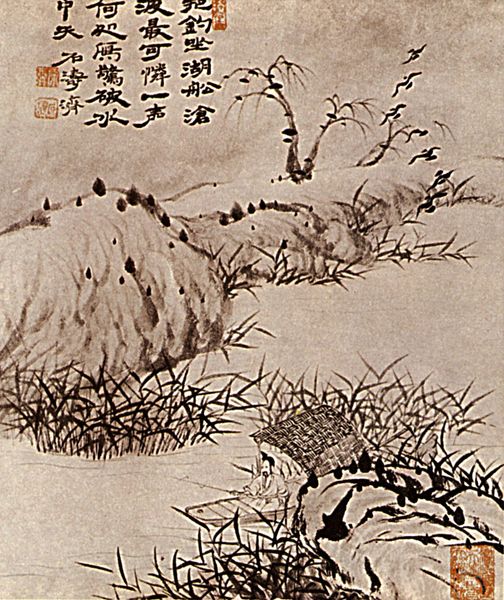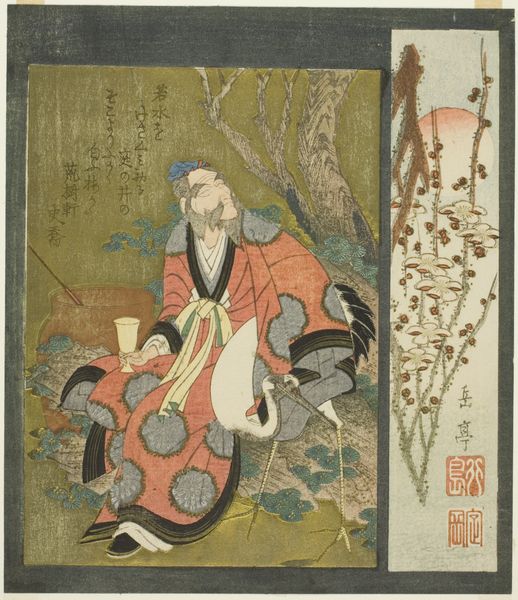
painting, paper, ink
#
portrait
#
painting
#
asian-art
#
landscape
#
figuration
#
paper
#
ink
Dimensions: 69 x 33 cm
Copyright: Public domain
Curator: Well, this is Shitao’s ink and paper piece, “Zhong Kui, Demons Tamer,” created around 1685. What strikes you when you first see it? Editor: The fluidity, actually. Look how the ink bleeds into the paper, especially around the figure. It's almost dreamlike, yet there's a definite weight to the forms, giving a strange sense of presence. Curator: It's important to know the figure depicted is Zhong Kui, a mythical figure often seen as a vanquisher of ghosts and evil beings. During times of social upheaval and dynastic change in China, Zhong Kui's image was invoked as a symbol of stability, a divine bureaucrat capable of restoring order. Editor: Bureaucrat! The formal qualities almost rebel against that. The dynamic ink washes create such unrest and that diagonal line plunges downward as if order is sliding away. Is this about power or anxiety? Curator: Likely, both. The social anxieties of the time – the late Ming, early Qing Dynasties – were palpable. But I find Zhong Kui's robes remarkable. The swirling strokes forming folds seem almost like captured ghosts. Shitao is showing us control, and also, the very real fear and chaos the people lived in. Editor: Absolutely! Shitao is using the material of the ink itself, its liquidity, as a visual metaphor. But also, look at that intense face peering from the painting—all captured so economically with just a few lines. Is he tired, pensive or weary, as if dealing with the endless procession of demons has taken a toll? Curator: I think the composition invites those readings. He isn’t brandishing weapons, isn't striding forth victoriously. The political instability of the time arguably turned the mythological protector into a weary bureaucrat longing for stability, but uncertain how to regain it. Editor: It makes you wonder if, in grappling with demons, are we equally facing something within ourselves? It’s striking how a relatively simple composition can evoke such complexity and ambiguity. Curator: It makes us consider how visual expression captures a whole socio-political reality, with all its tension and hope, in a way textual histories alone sometimes cannot. Editor: I completely agree. And, thinking purely formally, there is beauty here. That raw honesty of the brushwork creates the painting’s very captivating strength.
Comments
No comments
Be the first to comment and join the conversation on the ultimate creative platform.
